The syntheses of various faiths and cultures have shaped Odisha. Therefore, the state’s cultural canvas comprises many hues, each essential in shaping its performing arts and folk dances. This article will introduce you to Odisha’s various folk dances. Read on to learn more.
Several indigenous dance forms took their birth in the land of Orrisa. These Odisha folk dances are closely associated with games, festivals, weddings, and religious occasions. All dance forms have their local variations as they are deeply influenced by the respective local traditions, the way of living, or the social environment. These dances have greatly enriched the cultural heritage of the country.
Some of the best Odisha folk dances are listed below:
1. Ghumura Dance
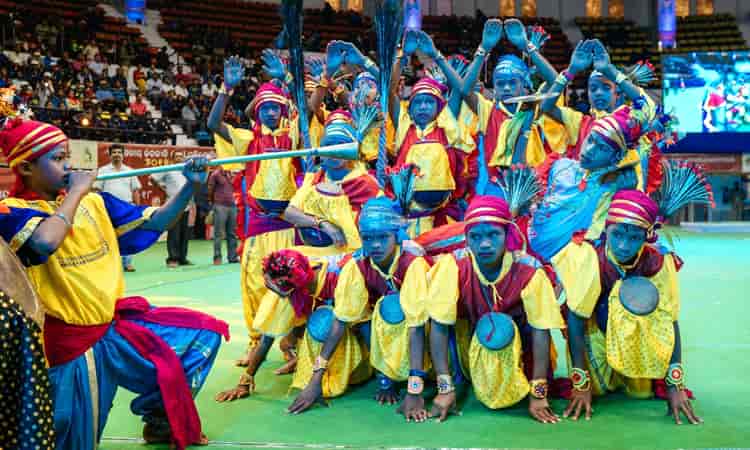
Ghumura is a folk dance of the Kalahandi district of Orissa. It is named after the main musical instrument, a pitcher-shaped drum called the Ghumura, which is tied around each dancer’s neck. The dancers play on the drum while dancing. It is performed to the accompaniment of songs, the content of which is varied, ranging from stories of hunting to everyday joys and sorrows of the people. The dancers execute intricate movements, jumps, and pirouettes at a fast tempo. The Ghumura is popular in Balangir, Sambalpur and Cuttack. With love as its main theme, the Ghumura is a common dance at social functions such as marriages. The Saora tribes and other aboriginal tribes mostly perform this dance.
Must Read: Folk Dance of Rajasthan
2. Sambalpuri Dance
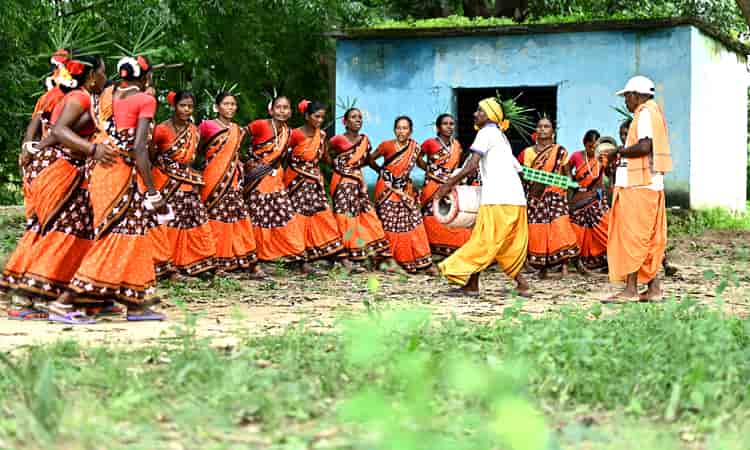
This dance form is a typical dance form of the western part of Odisha and has originated from the Sambalpur district of Orissa. Rhythmic beats, colorful costumes and earthy elements combine to make this folk-dance form stand out. This dance form ideally mirrors the rural and tribal culture and leaves a perennial impact on the mind of the audience. The dancers perform this dance in a festive mood and reflect an aesthetic expression in the face of the performers. The Sambalpuri dance is a broad term under which various dance forms are categorized such as Jaiphula, Dalkhai, Rasarkeli, Maleshree, Mailajada, Chutkuchuta, Dula Biha, Ghudka, and Korma.
3. Chaiti Ghoda Dance
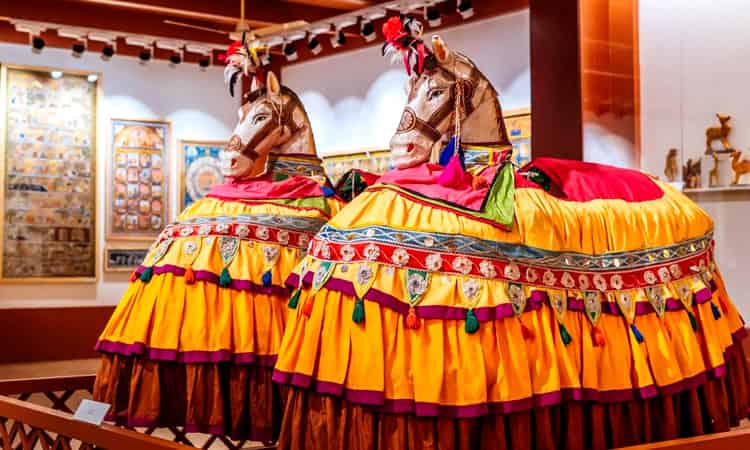
This dance is popular among the fishing communities of Odisha residing in the coastal belts. This is precisely a dance drama and is deeply rooted in the Shakti cult. In this dance, the dancers perform wearing elaborate attires and come mounted on dummy horses. The enactment in the form of a horse makes an integral part of this dance drama. Therefore, it is popularly called Ghoda Dance. A figure of the horse is improvised out of cloth and bamboo, and it is a complete horse figure with head and full body but without legs. The performer enters into the cockpit of the hollow horse body and hangs the horse figure around his waistline. The word ‘Chaiti’ stands for the Hindu month of Chaitra. This festival is held during the month of Chaitra. This dance performance begins from the full moon of the month of Chaitra and is performed throughout the month. The fishing communities of Odisha consider the horse or ghoda sacred and worship the horse. At the heart of this dance form, there is an interesting legend which says that a fisherman was gifted a horse by Lord Rama whom he had helped cross the Sarayu River.
Must Read: Folk Dance of Assam
4. Ranappa Dance
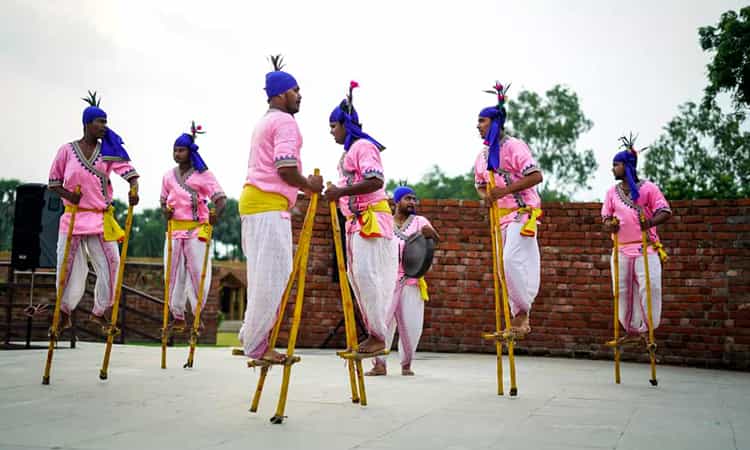
This dance form stands for ‘dancing on the stilt’. This dance is quite popular in the rural areas of Orissa’s Ganjam district. Various episodes from Lord Krishna’s childhood are enacted through this dance.
5. Gotipua Dance
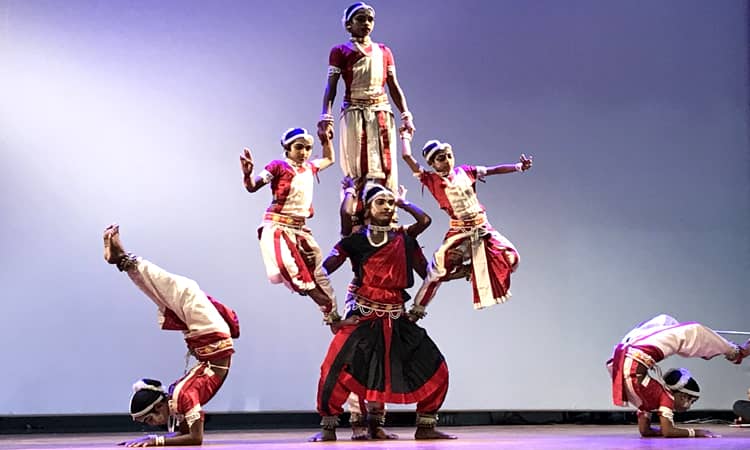
This dance is regarded as the precursor of the famous Odissi dance of Odisha. This dance is performed by young boys who get dressed up in female attire. The dance is characterized by acrobatic movements. This dance is quite famous in the holy city of Puri in Odisha. This dance form is generally performed in the temple premises the young boys who participate in this dance present the dance to entertain the deity. In this dance performance, you will get to see some exquisite rhythmic footwork and balancing acts. Also, in the famed craft village of Raghurajpur, this dance is famous. This village also houses a Gotipua Dance Academy.
6. Ruk Mar Dance
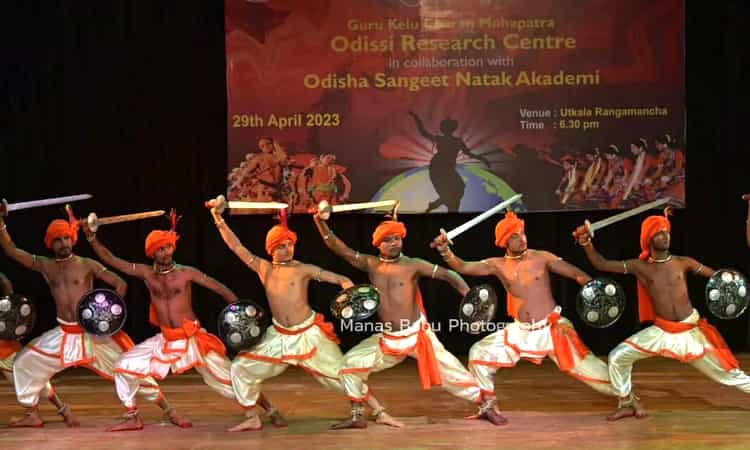
Ruk Mar Nacha is another martial dance form of Odisha. Ruk means to defend, and Mar means to attack. Thus, the dance is a highly stylized mock fight. It is prevalent in the Mayurbhanj district of Orissa and is believed to be the rudimentary form of the region’s evolved ‘Chhau’ Dance. Each dancer holds a sword in his right hand and a shield in his left. The group of dancers is usually divided into two; alternately, one group attacks while the other defends. The dancers’ effortless leg extensions belie the dance’s complex nature. The Ruk Mar Nacha stands out for its rhythmic intricacies. While the melodic base for the dance is provided by a double-reeded wind instrument called ‘Mahuri,’ powerful percussion is provided by a ‘Dhola’ (a barrel-shaped two-faced drum), a ‘Dhuma’ (a cone-shaped hemispherical drum with one face) and ‘Chad Chadi’ (a short cylindrical drum with two faces but played on only one face with two lean sticks.)
7. Chhau Dance
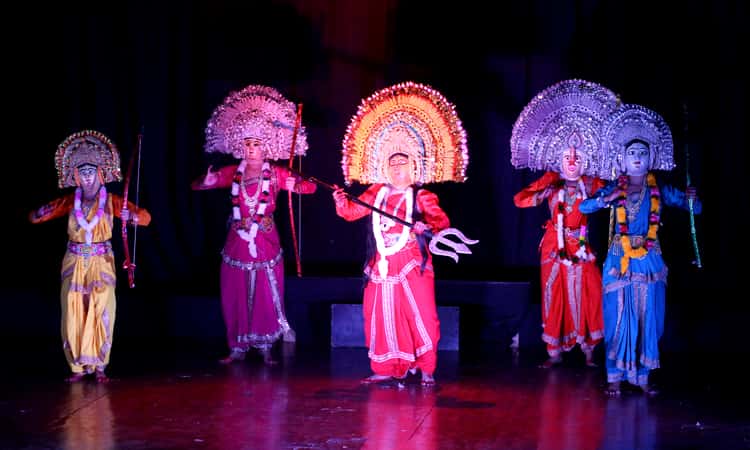
This dance form is typical of Odisha’s Mayurbhanj district. The dance form symbolizes a soldier’s movement in the battlefield. The various steps and gestures used in the dance are highly rhythmic and synchronized. This dance is said to have originated from the dress rehearsal of one of Odisha’s warrior clans called Paikas. This dance is marked by striking dynamic movements. Mythical stories find the expression through this dance form. The dancers wear masks and enact the roles from various legends.
Must Read: Folk Dance of Kerala
8. Mahari Dance
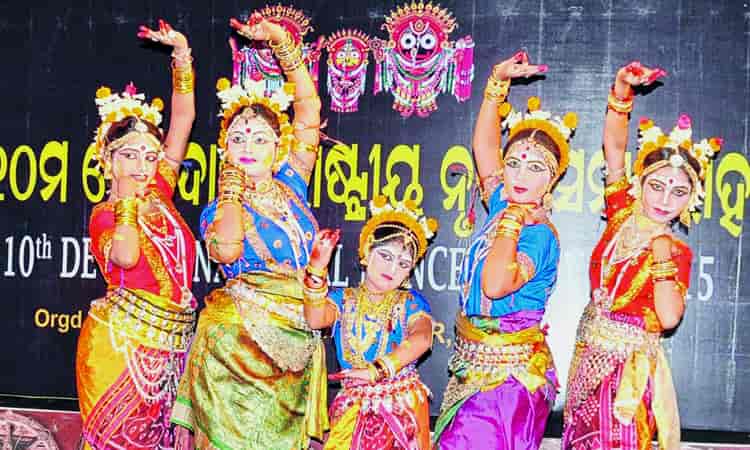
This dance form is practiced in the temples of Orissa, especially the Jagannath temple. The performers belonging to the Devdasi community performed this dance. This dance form is a bright example of skillful footwork, devotional expressions and intricate gestures.
9. Bamsarani Dance
The Bamsarani, literally meaning ‘Bamboo Queen,’ is a popular folk dance from Puri. In this dance, little girls exhibit acrobatic movements on a crossed bamboo bar as well as on the floor with admirable accuracy.
10. Karma Dance
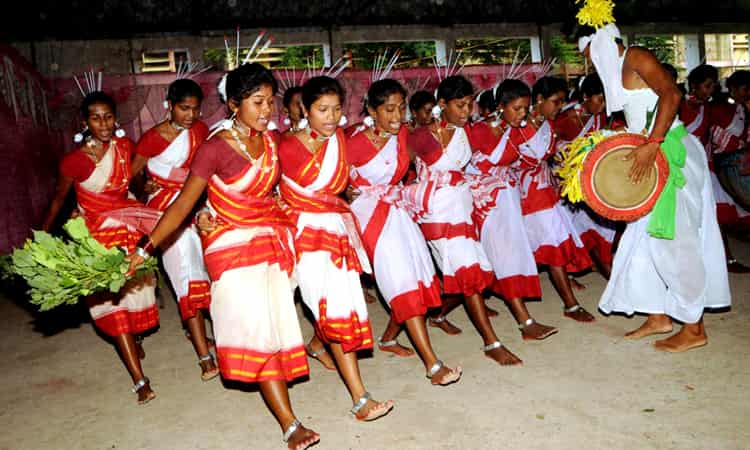
The ritualistic Karma Dance is performed in honour of the goddess ‘Karma Sani’ or ‘Karma Rani,’ which literally means ‘Queen of Fate.’ The dance is popular in Mayurbhanj, Sundergarh, Balangir, and Dhenkanal districts. In the month of Bhadra, a branch of the Karam tree is cut and carried to the dancing arena in a ceremonial procession. The branch is planted, and the boys and girls dance around it to the beat of drums. Different tribal groups perform the Karma Dance differently. The dance presents a fusion of colour and elegance. The women wear bright sarees with jewellery made from shells, and the men wear coloured turbans adorned with shimmering blue peacock feathers. The women dance in concentric circles, and the men move with characteristic steps. The indigenous instruments used are rhythmic and melodic.
Conclusion
Each dance form in Orissa is unique in itself. From costume to footwork to gestures and expressions, they differ from one another. If you are interested in the culture of the state, you must learn about the various dance forms of Orrisa. Without exploring the dance forms your knowledge of Orissa’s culture will remain incomplete. In this article we have talked about some of the most prominent dance forms of Orissa.



